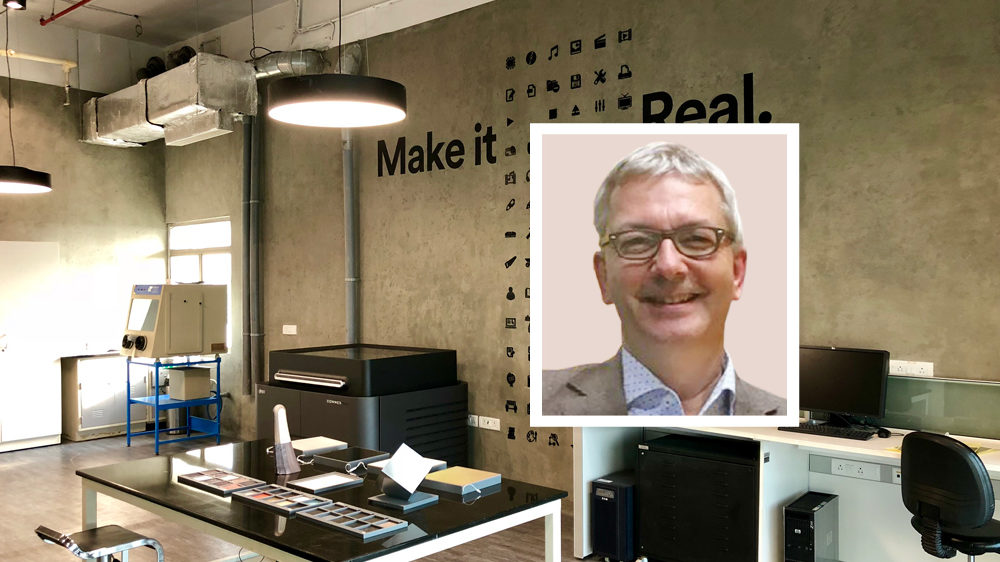3M India humanises technology for the Indian market
By OEM Update Editorial July 14, 2018 11:09 am IST
It is all about understanding the local community, society, industry and the economics, and from there we work with our partners in business and R&D to come up with great solutions.
Eric Quint, Vice President and Chief Design Officer, 3M
3M India, recognised for its diversified technology and innovation announced the opening of a new Design Centre in Bengaluru to accelerate the growth of design across the global enterprise. On the side-lines of the inaugural event, Eric Quint, Vice President and Chief Design Officer, 3M and Blessen Philip, Design Manager, 3M India spoke to Shashi Kumar Sharma to give an overview in relation to the Design Centre, the direct and indirect opportunities, their initiatives and the advantages 3M offers over other brands in India. Edited excerpts:
Could you give us a brief overview on 3M India Design Centre?
Eric: In relation to the Design Centre, we will have direct and indirect opportunities. Looking at the direct opportunities for design, several years ago, we had only a few designers in India and now the design team has grown to become 12 people. Now, we can see the design team evolving as the company further recognises the opportunities available for design in the growing Indian market. Further, our focus is to develop the function of design, meaning we would like to see the design team and our capabilities growing in tandem with the development of R&D and manufacturing in India.
In terms of indirect opportunities, there is a huge possibility of amplification as we can team up design with the marketing and R&D function to drive competitive advantage. Our strategy is to make more relevant and meaningful solutions for the local markets.
Is this initiative under the ‘Make in India’ movement?
Eric: The inception of 3M Design Centre is not directly linked to ‘Make in India’ as it is driven by a global strategy to design for local markets; however, our strategy is very much intended to ‘Make and create for India’. We have identified key locations where we felt the need to be present and India is a growing market with great opportunities. Our presence in India fits as it is aligned with ‘Make in India’. It is all about understanding the local community, society, industry and the economics, and from there we work with our partners in business and R&D to come up with great solutions.
Blessen: We have been in India for 30 years now. Earlier, we would sell our products globally but now we customise it and sell it to our Indian customers. Over the last 4-5 years, we have taken this a step further where we built on our core technologies and optimising, redesigning and planning long-term changes in our product lines to suit our customers’ requirements. We have been working on products that are in the areas of air quality, road safety and smart cities domain. Over and above these, we are exploring customisation in products for the healthcare sector as well.
Eric: In India, the cultural context and the country’s infrastructure is completely different as compared to Europe or the US. We have great solutions and we understand the need to customise them to suit the Indian market. One of the things that we do is engage with the government bodies. For example, we have partnered with Indian Railways, wherein we use our solutions to re-design the passenger trains to enhance the traveller’s experience. Once we showcased the diversity of our design capabilities and creativity, they were keen for us to share best practices of design thinking. It is very encouraging to see that government organisations, too, are picking up on the need for design and innovation.
What advantages 3M solutions offer over other brands in India?
Blessen: 3M is a global innovation and material science company having path-breaking products in the market. What sets us apart is our collaborative approach with our customers where our designers ensure that the products are adapted to suit the Indian consumer’s need. This is how we enable to stay competitive in a market as diverse as ours.
Additionally, the way we apply our innovation brings the biggest differentiation vis-à-vis our competitors. Though we don’t develop new products in India, we explore the possibilities of all these technologies and that’s where the creative part comes in. We really need to understand the customer needs to help us position the right products. In some cases, it can be the aesthetics or functionality, while in others, it can be the affordability. Understanding the customer’s objective helps us bridge the gap and provide the appropriate solutions.
We help our customers see these possibilities that give the end user enhanced product experience that may move beyond functionality only. For example, when we work with B2B automotive companies, we show their designers how our materials can be used to get the desired effect for the end-user.
Eric: We want to build on our technology platforms but we need to look out for the customers’ needs as well. Actually, there are 4 to 5 platforms that are contributing 60 to 70 per cent of our business. We have so many technologies that can be applied in a meaningful way across industries in India and that’s what the design team is for, to help us humanise technology.
Cookie Consent
We use cookies to personalize your experience. By continuing to visit this website you agree to our Terms & Conditions, Privacy Policy and Cookie Policy.


















